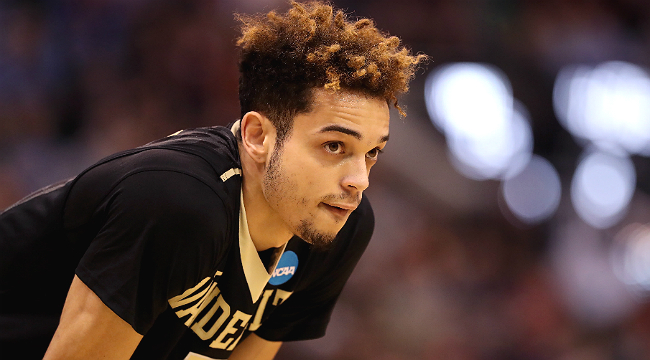
We’ve finally found it: the best sports WELL ACTUALLY moment of all-time. That dumb play you saw in the NCAA Tournament on Thursday? Well ACTUALLY, it was brilliant.
Vanderbilt’s boner made for exasperated March Madness viewers when the Commodores appeared to intentionally foul themselves out of the lead and out of the NCAA Tournament’s first round. Vanderbilt took a 66-65 lead over Northwestern with under 18 seconds to play, but Commodores guard Matthew Fisher-Davis intentionally fouled Vanderbilt’s Bryant McIntosh, sending him to the free throw line.
McIntosh made both free throws, Vandy couldn’t respond, and Northwestern won, 68-66.
A devastated Fisher-Davis said he “made a dumb-ass foul” after the game. But according to a story by the Wall Street Journal, it wasn’t all that dumb. You should click this link from the tweet below because paywalls, but the story is definitely worth reading.
The bonehead play from last night's March Madness might have accidentally been brilliant https://t.co/1JHJmCDzi1
— WSJ Sports (@WSJSports) March 17, 2017
As WSJ‘s Andrew Beaton explains, the relative intelligence of this play comes down to not what happened, but the percentages of what could have happened with the free throws and the remaining time on the clock.
If Vandy lets the game play out and gives Northwestern a chance to get the last shot, the Commodores have a 51 percent chance of winning. That’s basically coin flip odds based on whether they can defend well enough to not allow a good 2-point shot from anywhere on the court, and avoid taking a foul that would put Northwestern on the line anyway.
Remember that coin flip percentage. It’s important because an entire new set of percentages come into play after the foul.
The various permutations first center around whether Northwestern’s McIntosh, an 86% free throw shooter, would hit both free throws, just one of two, or miss both. Even in the 74% of times McIntosh hits both of his attempts, Vanderbilt then has its own possession to try and score. Giving Vanderbilt the same assumption we gave to Northwestern, that it could get off its average two-point shot (48%), that amounts to a 36% chance for the Commodores to win.
But there are various other scenarios where Vanderbilt can win as well—when Northwestern hits just one or none of its free throws. These are less likely to occur because McIntosh is a good free throw shooter, and involve some permutations where the game goes to overtime (and where the game is presumably a coin flip.)
Add the estimated probabilities of those scenarios (19%) to the above 36% and that gives Vanderbilt a 55% chance at winning when they foul, which if you recall is higher than the 51% if they didn’t. By this logic, Fisher-Davis increased the Commodores’ chance of winning.
Insert stunned man blinking blankly GIF here.
Basically, fouling puts McIntosh on the line with a chance to score points, but also ensures Northwestern of another possession. There’s less time left on the clock and they obviously could have—and did—give up the lead, but in the end they had a better chance of winning if you like numbers and potential better than reality.
If you’re a Vanderbilt fan, of course, you’d prefer anything to reality at this point.
Beaton points out that many international teams are more willing to embrace this line of thinking when it comes to basketball’s endgame. And if Vandy had actually won, it could have sparked a real debate about what’s the “smart” play in that situation. When most people saw that play unfold on Thursday they reacted with equal parts confusion and the nagging sense that they were missing something. It had to be done for a purpose, right?.
Turns out, maybe we actually were missing something there all along. As always, we’re never as smart as we think we are.






